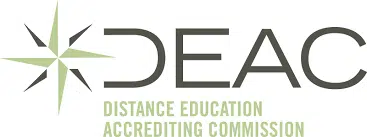Co-Teaching In The EFL Classroom
Join a global community of over 200,000 TEFL teachers working throughout the world! Enrol me!
Teaching English as a Foreign Language is nothing if not unpredictable, and there are a number of interesting situations you might find yourself in. You might not realise this but when you arrive at a new job, you might find you’re not the only teacher in the classroom! That’s right: there are times when you are a co-teacher rather than a teacher. Some teachers enjoy co-teaching while others don’t, but let’s look at co-teaching in more detail so if you ever find yourself in this situation you’ll know what to expect and won’t be caught off-guard.
What is co-teaching in the EFL classroom?
Generally speaking, in the EFL classroom, there is one teacher. This teacher plans lessons, sources materials, and carries out their lesson plans. If the lesson starts to go south, the teacher must think on their feet and rescue the lesson themselves. If the students start misbehaving, the teacher must decide what action to take to sort it out. Or, if the classroom technology fails, the teacher must make a plan to continue with the lesson. The teacher must also deal with all teaching-related admin, including assessment and homework.
Read more: 5 Reasons Your TEFL Lesson is a Dumpster Fire
In some classrooms around the world, it is common to have two teachers in the classroom at the same time. There are a couple of variations of how this can work.
A teacher and an assistant
In this case, the teacher is in charge of planning the lesson and collecting resources. The assistant is usually a local teacher who can speak the local language, as well as English (though possibly not to a very high level). The teacher explains the lesson to the assistant beforehand and they teach the lesson together: the teacher leads the lesson and the assistant helps with the logistics of the activities. Because the assistant can speak the language of the students, the assistant will often deal with any administrative issues. With younger learners, the assistant is often there to help with discipline.
An alternative situation is when the TEFL teacher is the assistant. In this case, the local teacher will be the English teacher but the TEFL teacher is there to help with pronunciation and any other language questions. The TEFL teacher might also be in charge of carrying out certain activities in the lesson or will be asked to lead certain stages of the lesson, though the local teacher would be in charge of lesson planning.
Team teaching
When it comes to team teaching, both teachers are equal in the classroom. They plan lessons together and carry them out together. This might mean delegating different stages of the lesson to each teacher, or it could be joint teaching for the entire lesson.
Another similar scenario is the teachers teaching simultaneously in different parts of the classroom. The teachers will be leading different activities and the students will take turns with each teacher. This method is often utilised in Content and Language Integrated Learning classrooms.
Read more: How To Integrate CLIL into Your EFL Lessons

Does co-teaching work?
The research on co-teaching has been very positive. Often the two teachers will have complimentary, or at least different, teaching styles and learners can benefit from this. When it is the case that one teacher is a native English-speaking teacher (NEST) and the other is a non-native English-speaking teacher (NNEST), it is usually the case that the NEST focuses on fluency and communicative ability while the NNEST focuses more on accuracy. So the students essentially get the best of both worlds!
Of course, there might be situations when co-teaching doesn’t work. When this happens, for whatever reason, it is a disaster not only for the students but also for the teachers. It can be very awkward when the relationship between the two teachers is strained or if there is confusion as to the role and responsibilities of each teacher. So while co-teaching can create a very effective learning environment, it needs to be done properly.
Tips for co-teaching
There are a few things you can do to try to make co-teaching as seamless as possible.
Build a relationship. This may take time but it’s essential for a successful co-teaching situation. At first, it might feel a bit awkward teaching with someone else, but getting to know that person personally and professionally will make it that much easier.
Recognise that you’re equals. This can be tricky if one teacher has more experience and qualifications and therefore more responsibilities than the other. However, even if that is the situation, your learners need to think of both teachers as equals. This should be communicated both through your language (our learners) and through where the teachers stand in the classroom.
Communicate. Make sure that both teachers involved know exactly what is going on. They must be clear on the planning process, the execution of the lesson and its activities, the broader planning framework, assessment methods, and responsibilities, as well as discipline procedures.
Plan together. This might not always be possible but if it is, set aside to plan lessons together. This way both teachers are on the same page from the very beginning. And you know what they say, two heads are better than one!
So don’t be surprised if you find out that your new job comes with a co-teacher. Before you start teaching, make sure you clarify the nature of this relationship so you can make sure it works for both of you, as well as your students.
Accreditation & Quality Assurance
The TEFL Academy was the world’s first TEFL course provider to receive official recognition from government regulated awarding bodies in both the USA and UK. This means when you graduate you’ll hold a globally recognised Level 3 (120hr) Certificate or Level 5 (168hr) Diploma, meaning you can find work anywhere and apply for jobs immediately.
 United States
US
United States
US












